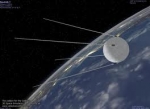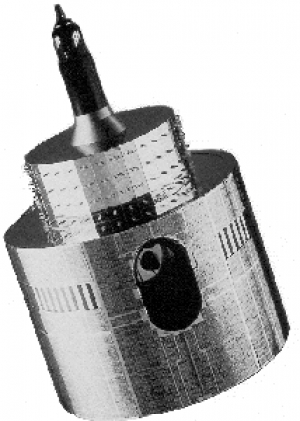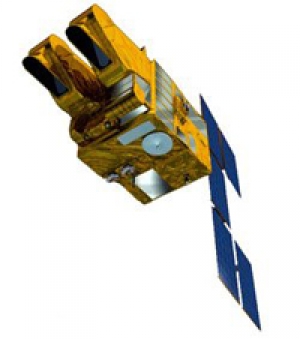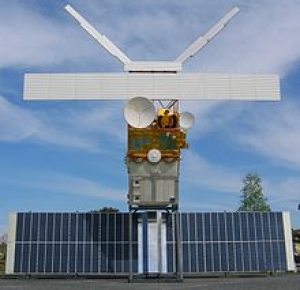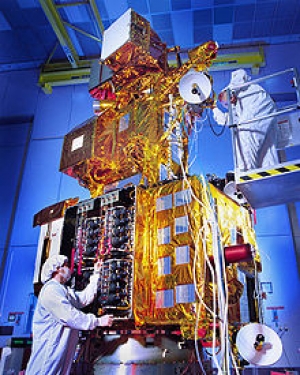Displaying items by tag: satellite
PanAmSat
The former PanAmSat Corporation founded in 1984 by Reynold (Rene) Anselmo, was a satellite service provider headquartered in Greenwich, Connecticut. It operated a fleet ofcommunications satellites used by the entertainment industry, news agencies, internet service providers, government agencies, and telecommunication companies. Anselmo got the idea for PanAmSat from Martine Rothblatt, an independent communications lawyer in Washington, D.C., to whom he had turned to for advice regarding difficulties he was encountering in getting reasonably priced satellite transmission of his UHF-TV based Spanish International Network (SIN), with studios on 42nd Street in New York City. Rothblatt had written a business plan entitled PanAmSat for her MBA thesis at UCLA's Graduate School of Management and was seeking a financial backer. Anselmo partnered with Rothblatt on the PanAmSat project, with Anselmo providing financing and Rothblatt filing for approval from the Federal Communications Commission and lining up an initial satellite from RCA Astro-Electronics and a heavily discounted launch from Arianespace.
PanAmSat effectively broke the monopoly on international satellite communications which was held by Intelsat, an international treaty-based organization founded and owned by several countries including the United States. PanAmSat, led by Anselmo, successfully lobbied the United States Congress to permit it to operate globally, competing against Intelsat. PanAmSat (and Anselmo) became famous for full-page advertisements in the Wall Street Journal depicting Spot, the PanAmSat mascot, urinating on politicians' legs. The company's motto was "Truth and Technology Will Triumph Over Bullshit and Bureaucracy."
Following the death of Rene Anselmo in 1995,[1] his widow Mary Anselmo controlled the company for a time. PanAmSat was sold to Hughes Electronics, a division of General Motors, in a $3 billion cash and stock deal. The satellite operations continued to be under PanAmSat with Hughes being the majority shareholder. In May 1997, Hughes Communication Galaxy merged with PanAmSat, adding 9 more satellites to its fleet. In 2003, News Corporation purchased Hughes Electronic's PanAmSat division and on April 24, 2004 sold PanAmSat to a consortium ofprivate equity firms in an leveraged buyout including Kohlberg Kravis Roberts & Co. (KKR), Carlyle Group and Providence Equity Partners for $4.3 billion.
Metop
MetOp is a series of three polar orbiting meteorological satellites operated by EUMETSAT, the European Organisation for the Exploitation of Meteorological Satellites.
The satellites form the space segment component of the overall EUMETSAT Polar System (EPS), which in turn is the European half of the EUMETSAT/NOAA Initial Joint Polar System (IJPS). The satellites carry a payload comprising 11 scientific instruments and two which support Search and Rescue services. In order to provide data continuity between MetOp and NOAA Polar Operational Satellites (POES), several instruments are carried on both fleets of satellites.
Sputnik program
Sputnik, a Russian word meaning "companion" or "satellite", is a name applied to certain spacecraft launched under the Soviet space program. "Sputnik 1", "Sputnik 2" and "Sputnik 3" were the official Soviet names of those objects, while the remaining designations in the series ("Sputnik 4" and so on) were not official names, but were names applied in the West, to objects whose original Soviet names may not have been known at the time.
Meteosat
The Meteosat series of satellites are geostationary meteorological satellites operated by the Euopean organisation EUMETSAT.
SPOT
SPOT (Satellite Pour l’Observation de la Terre, lit. "Satellite for Earth Observation") is a high-resolution, optical imaging Earth observation satellite system operating from space. It is run by Spot Image based in Toulouse, France. It was initiated by the CNES (Centre national d'études spatiales — the French space agency) in the 1970s.
ERS - European Remote Sensing satellite
The European remote sensing satellite (ERS) was the European Space Agency's first Earth-observing satellite, injected into a Sun-synchronous polar orbit at a height of 782–785 km.
ERS-1 and ERS–2 were launched into the same orbit in 1991 and 1995 respectively. Their payloads included a synthetic aperture imaging radar, radar altimeter and instruments to measure ocean surface temperature and wind fields.
ERS-2 added an additional sensor for atmospheric ozone monitoring. The two satellites acquired a combined data set extending over two decades.
Landsat
The Landsat program is the longest running enterprise for acquisition of satellite imagery of Earth.
On July 23, 1972 the Earth Resources Technology Satellite was launched. This was eventually renamed to Landsat.
The most recent, Landsat 7, was launched on April 15, 1999. The instruments on the Landsat satellites have acquired millions of images. The images, archived in the USA and at Landsat receiving stations around the world, are a unique resource for global change research and applications in agriculture, cartography, geology, forestry, regional planning, surveillance, education and national security.




